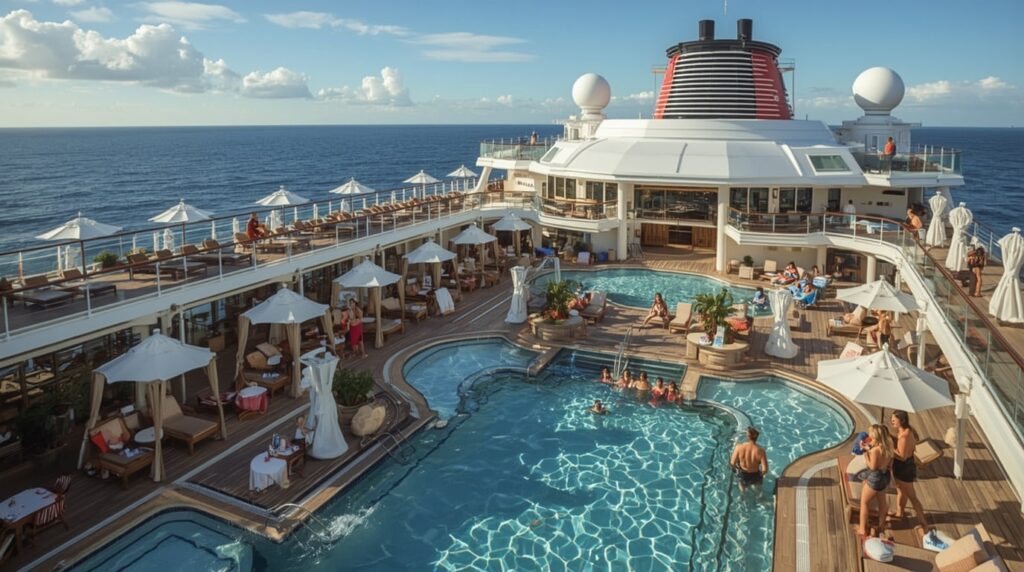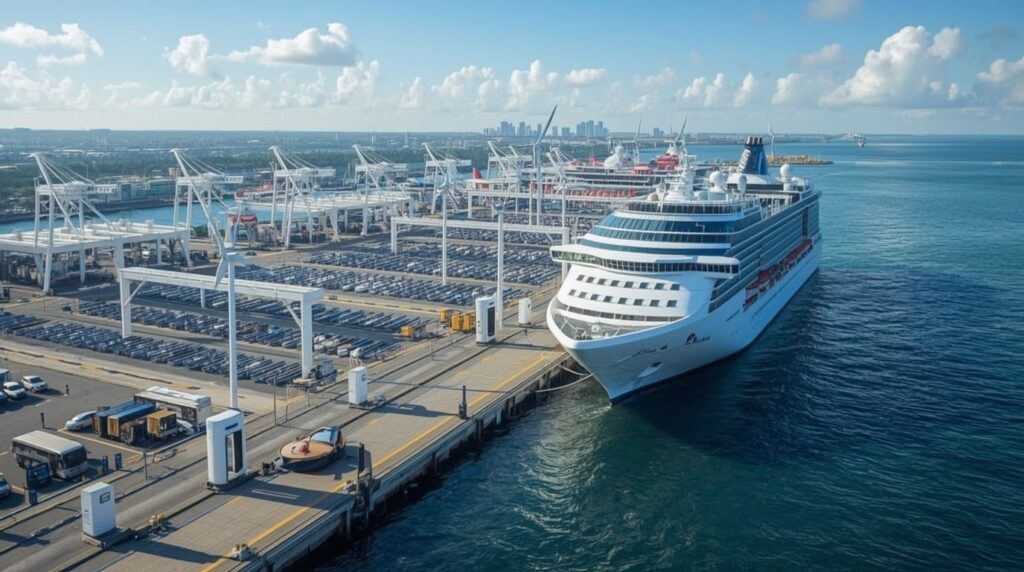Key cruise ports around the globe are increasing their efforts to install improved fast-charging technologies to comply with the entry of next-generation electric vessels in 2026. This project is based on the sustainability agenda because battery-powered and hybrid vessels will be able to charge fast when at dock to minimise emissions and increase efficiency. Ports such as Seattle, Miami and Canaveral are at the forefront of this green revolution.
What Cruise Ports Announced
The cruise ports have identified intentions of installing large-capacity fast-charging stations that will be specific to the electric cruise liners. Such systems are based on the previous shore power technologies, but enhanced to faster, more efficient systems that are able to support new vessel designs of upcoming lines such as Carnival and Norwegian.
The announcements also focus on being integrated with renewable energy sources, which will make the operations environment-friendly. As an example, new installations will do charging at the level of megawatts, reducing recharge time in hours to minutes in smaller vessels and maximising in large vessels.
- High-Voltage Shore Power Systems: Ports are deploying megawatt chargers, which can directly interface with ships, to enable them to turn off their engines and supply them with clean grid power, which was first trialled by such companies as Watts Marine.
- Renewable Energy Integration: Numerous systems will also connect to renewable energy sources, such as wind or solar, such as offshore charging stations, to supply electric ships of the next generation with green energy.
- Standardised Connectors: Universal marine charging requirements to promote fleet-to-fleet compatibility to resolve the challenge of multiple connectors currently used.
- Network Expansion: The marine charging networks, e.g., of Aqua superPower, can be further expanded to high-speed DC charging in the ports of various countries around the world.
Such upgrades are a significant step toward an electrified maritime travel.
How Fast-Charging Will Improve Guest and Operational Experience
The fast-charging systems of the new cruise ports will reshape the mode of operation of the ports by speeding up the turnaround of ships and reducing downtime. Battery recharging of ships can be done in a short time, and as such, there is no time wastage through long idling.
To tourists, this is cleaner air in ports as ships would turn off the diesel engines earlier. The improved sustainability will attract the attention of environmentally friendly travellers, helping to increase the bookings.
Other operational efficiencies are savings made on fuel and adherence to emission laws. The International Maritime Organisation statistics indicate that shore power has the potential of reducing port emissions by 95% and fast-charging can accelerate this advantage.
Trends in the industry show that electric vessels will be used 40% more widely by 2026, which will necessitate the provision of this infrastructure. The ports with such systems may have a 20-30% increase in energy efficiency.
Indirectly, the passengers have the advantage of sailing through smoother voyages because the charged ships are in optimum operation at sea.

Why Cruise Ports Are Investing in Fast-Charging
The increase in the fast-charging of ports is driven by stricter environmental standards and the cruise market’s (needing a net-zero) approach. As the next-gen electric ships are coming in, the infrastructure should keep up with them to make large operators interested.
The level of competition between ports is also on the increase, with the ports with developed charging having an advantage in accommodating sustainable fleets. This reflects the general trends in maritime electrification.
The Carnival Corporation takes expert knowledge and emphasises: “When in port, we are plugging into our ships and running them on plenty of supplies of shore-based electrical power. This is in line with the Charged EVs port expansions.
There is also a post-pandemic recovery of investments where green tech leads to economic growth and job creation in terms of installation and maintenance.
To get more information on maritime sustainability, refer to (Insert internal link to electric shipping trends article).
Facilities and Ports Undergoing the Upgrade
Upgrades are planned on major hubs: Port of Seattle, Port of Miami, Port Canaveral and new developing destinations in Europe as Rotterdam. Such ports will include the new fast-charging docks on electric cruise ships in 2026.
Port of Seattle intends to roll out complete shore power across all cruise terminals in partnership with Watts Marine by the middle of 2026.
The cruise terminal in Miami will bring infrastructure, which can accommodate electric ships, based on EV stations. Canaveral joins the ranks with fast-chargers to use in the marine.
The affected routes are Caribbean routes of Miami, Alaska routes of Seattle, and transatlantic routes of Europe. Timeline: The initial installations will start at the start of 2026 and become operational by spring to make the first voyages.
Find out about port development through (Insert internal link to global cruise ports guide).
Frequently Asked Questions
What are electric ships with fast-charging systems?
Electric ship fast-charging Systems are large-capacity electric connections in ports which enable ships to recharge batteries in a short period when docked. They can be used by marine vessels, similar to EV chargers and scaled up to operate on shore power, decrease ships’ emissions and use clean energy, such as wind or grid renewables.
What is the earliest port to make these improvements?
Early in the year 2026, ports will start to introduce the cruise ports’ fast-charging system, which will become fully operational in the spring. The first installations in such locations as the Port of Seattle and Miami will accompany the implementation of next-gen electric ships to test and use commercially.
What ports are in the installations?
The main ports are the Port of Seattle, the Port of Miami, Port Canaveral and European terminals such as Rotterdam. These ports are giving preference to renovations to accommodate electric cruise ships in 2026 in different regions and routes.
What is the benefit of such systems to the environment?
Fast-charging lessens the use of fossil fuels in ports by enabling ships to charge into the grid or renewable power, thereby minimising the emission of greenhouse gases. This favours internationalisation of sustainable maritime transportation.
Are there any shipping costs with the use of these systems?
Although the costs of installation are port-funded, ships can pay usage costs depending on the amount of energy used. But they are usually borne out in long-term savings in fuel, and so it is feasible for operators.
Conclusion
With the acceptance of fast-charging in next-gen electric vessels in the cruise ports, the industry is on the verge of a sustainable future and offering cleaner oceans and innovative travelling. Such 2026 developments can transform cruising.
Keep abreast with the changes. Read the official websites, such as Carnival Corporation Sustainability or the Port of Seattle Blog.

Leave a Reply